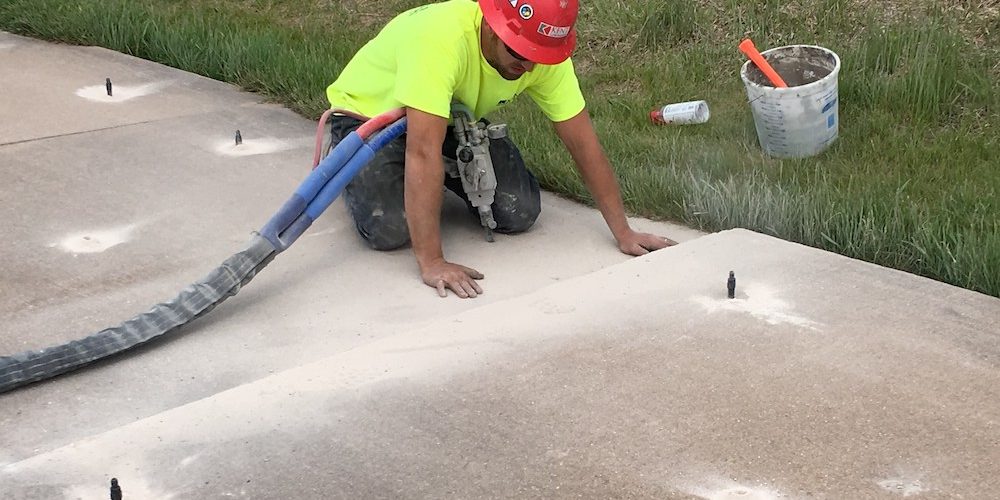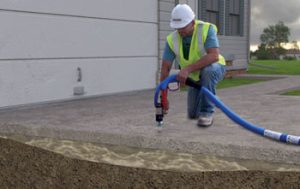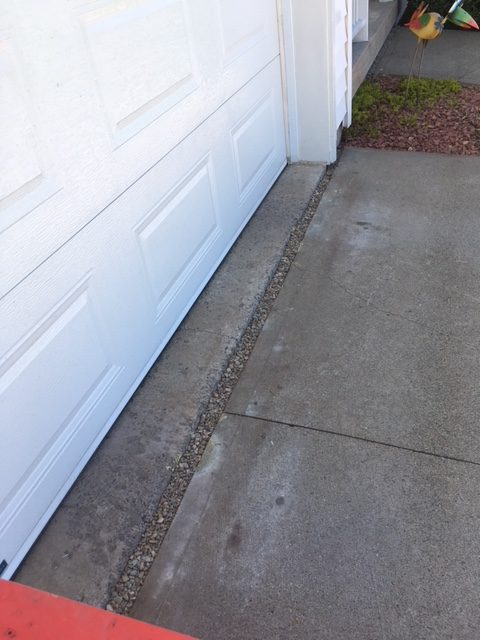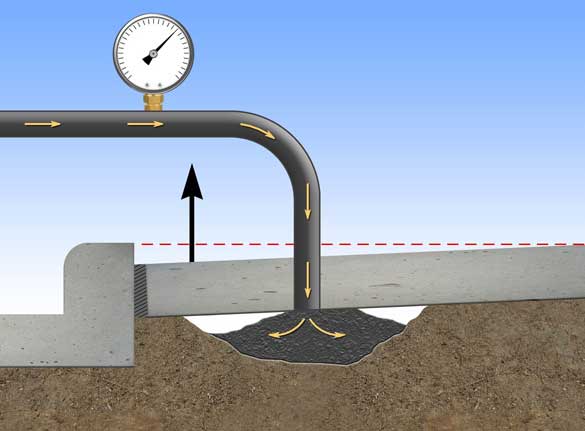Slab Jacking with Lighter Material Prevents Further Sinking
We are often asked what are the biggest advantages of lifting settled concrete slabs with polyurethane foam vs. cement grout. One of the biggest advantages is the weight. Depending on the product, the density of structural polyurethane lifting foam is between 3 ½ and 5 pounds per cubic foot. The same volume of cement grout weighs 140 pounds per cubic foot. This translates to 30 to 40 times more added weight using cement vs. polyurethane. By using lighter weight materials, you are giving yourself a much greater chance for long term success. (Polyurethane is strong enough to support any structure.)
Concrete Lifting with Polyurethane Creates Less Mess
Another advantage of using foam is the size of the drill holes. Drilling holes for foam is quick and easy requiring only a 3/8” hole to inject through. For mud jacking you are drilling injection holes ranging from one to two and a half inches. This takes longer, does more damage to the concrete, and the drills and drill bits are more expensive. With mud jacking there are the additional problems of trash and disposal of unused mixed cement.
Mudjacking with Cement Requires Longer Cure Times
The final advantage of foam over cement is time. All of our AP Lift series products reach 90 percent of their final strength in 15 minutes and fully cured in less than a day. Literally, as soon as you are done packing up your equipment the foam under the slab is ready for traffic. On the other hand, cement grout can take up to 28 days to reach it’s final cure. Having immediate load bearing traffic is especially important for facility’s such as warehouses that run 24/7 and need to use the areas lifted as soon as the job is complete. Stay tuned for more advantages of lifting with foam vs. cement.
Interested in finding out if slabjacking is right for your concrete damage? Contact the pros at Advantage Insulators for a free quote and consultation and receive an estimate on how slabjacking can fix your concrete problems.






